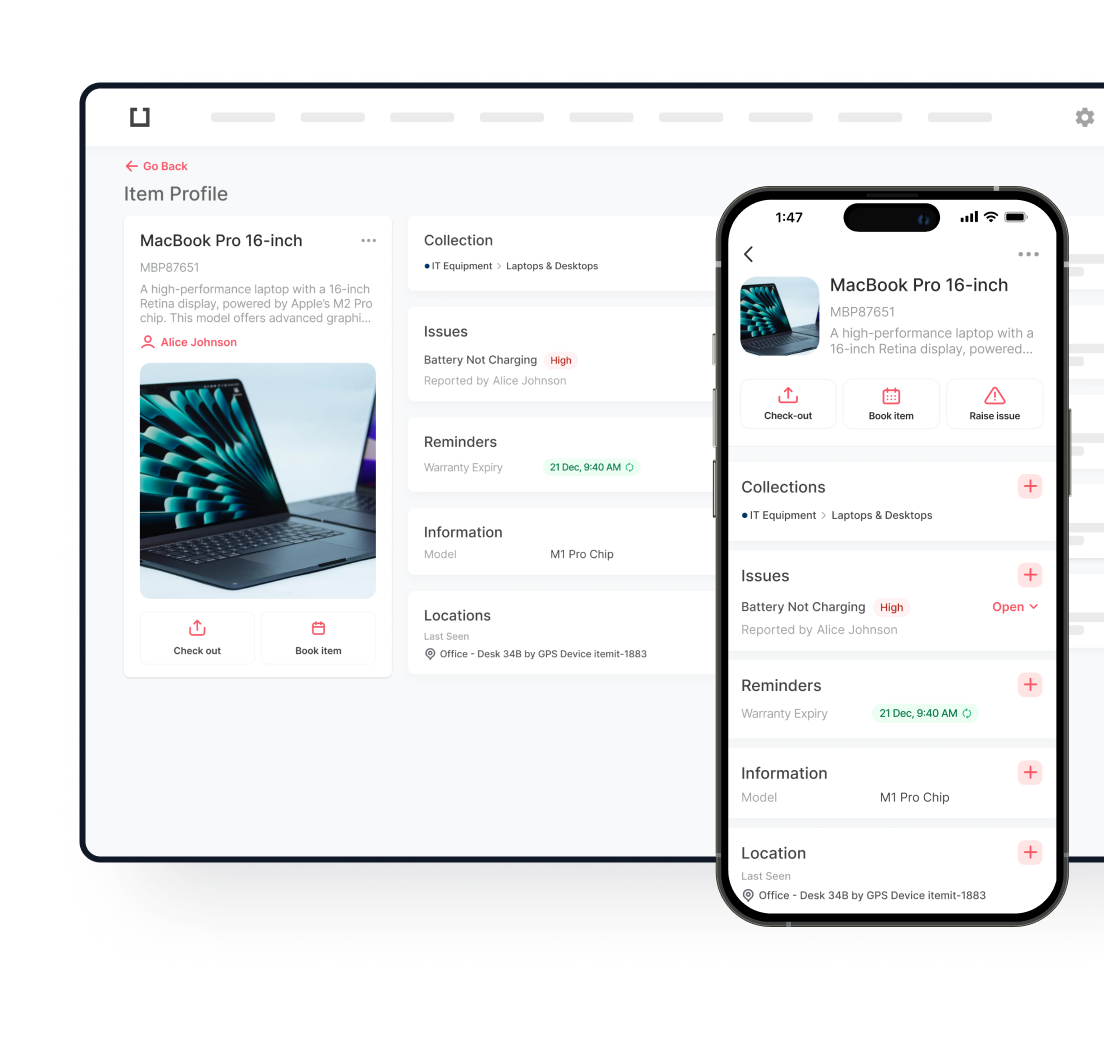
When you track your assets’ lifecycles, you get more use and longevity out of your assets. Knowing what state your assets and tools are in, where they are and how usable they are all gives you a return on investment.
As you’re able to monitor your assets, you can make decisions based on this information, too, such as which assets you need to decommission, purchase, and deploy.
Overall, asset lifecycle tracking gives you more visibility and control over your assets which, in turn, gives you back time and money.
What Is Asset Lifecycle Tracking?
Asset lifecycle tracking is the discipline of monitoring an asset throughout its lifetime. This means monitoring an asset from when it’s received, to when it’s put in use, to when it’s decommissioned, to when it’s either sold on or scrapped.
There are various important parts to asset lifecycle tracking, including maintenance monitoring for routine and reactive maintenance. You need to reduce asset downtime and know about issues as early as possible so that they don’t become fatal for the asset.
You also need to be able to track your assets’ depreciation so that you can see which assets are no longer economical to use and replace them in a healthy, and timely, schedule.
Why You Should Track Assets
So, why should you go through these asset tracking operations? It’s quite simple: when you track equipment checkouts, issues, and locations, you get much more visibility over your assets.
This visibility saves you time and money and gives you more accountability over your assets. In turn, this translates to longer asset lives and more accurate tax and insurance reports.
You also avoid risks such as misplacing assets. A lost asset can decrease your visibility over your accounts and, therefore, offset any depreciation calculations and create a risk of ghost assets.
The Best Way To Track Your Assets’ Lifecycles
So, what is the best way to track your assets’ lifecycles? Quite simply it’s the use of asset tracking software.
With asset tracking software you’re able to log all of your assets and equipment onto a system and physically track them. You can add critical data and information against these assets, too, such as issues and maintenance.
A clean UI makes pinpointing growing asset issues or risks simple and, therefore, allows you to mitigate an accelerated end of life for your assets.
You’ll be able to use software for IT asset management, fixed asset tracking, tools and equipment tracking and more, ultimately tracking the asset lifecycle of all of this kit.
Then, you can increase usability, accountability and visibility even further by using asset tags. Asset tags allow you to automate auditing as, every time you scan an assets’ tag, that assets’ last seen location will update.
itemit’s Asset Tracking Software
itemit’s asset tracking software gives you a cloud-based app and integrated web portal. This means that any changes you make onsite are also reflected on your desktop, ready for you to run and edit reports on.
With itemit, you can run reports on your assets to see which assets need the most maintenance and have issues associated with them. You can also run reports to see which assets have and haven’t been scanned after a certain date.
Ultimately, itemit gives you the visibility you need over your assets to take them further and get the most use out of them possible, while also helping you reclaim accountability over your assets.
To find out more about how itemit can help your business, you can contact the team at team@itemit.com or fill in the form below to start your 14-day free trial.

Try itemit
Choose a better way to track your assets. Start your free 14-day trial now!

Keep Learning
itemit Blog
Tips, guides, industry best practices, and news.
Why Ghost Assets Need Eliminating
Why do ghost assets need eliminating and how exactly can laptop inventory management help? Read this post now to find out!
Keep Your Production Line Running: Use Fixed Asset Tracking
Want to know how to effectively keep your production line running? Use a fixed asset register. Read this post now to find out why & how it helps!
Why Managing Facilities Is Better With An Asset Tracking Tool
Finding it difficult to track your facilities? Use an asset tracking tool that can make your life so much easier. Read this post to find out more!

